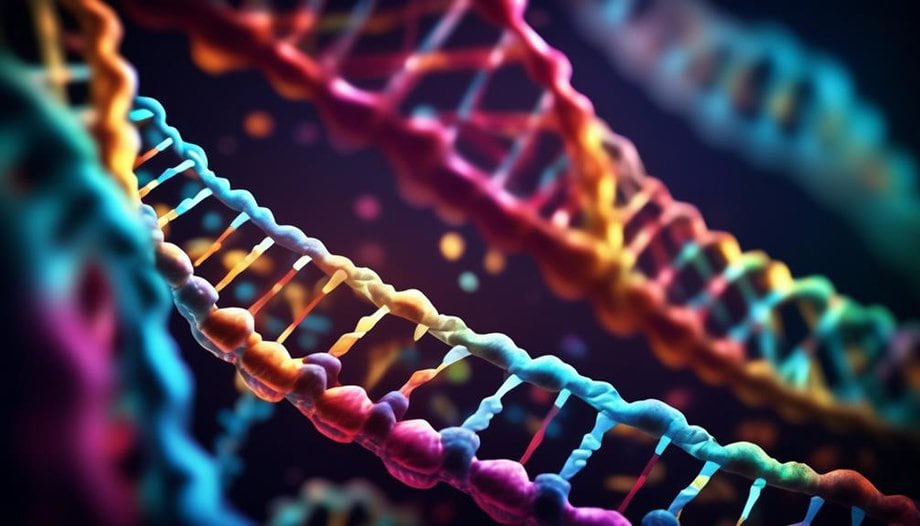Human Genome Project (1990-2003) – Collins: Recap and Summary: Mapped Human DNA

The Human Genome Project, led by Dr. Francis Collins, mapped the human genome over a decade. This project provided groundbreaking insights into our genetic makeup and its implications for medicine.
Key Takeaways
- The Human Genome Project was a collaborative effort that spanned 13 years from 1990 to 2003.
- The project utilized advanced gene sequencing technologies and computational algorithms to map and sequence the entire human genome.
- The discoveries and breakthroughs from the project included identifying disease-causing genes, understanding genetic mutations, and providing insights into gene-environment interactions.
- The implications for medicine and healthcare include improved health outcomes through targeted therapies and personalized medicine, genetic counseling, and improved diagnostic tools for early detection of genetic disorders.
Project Inception and Goals
The Human Genome Project was initiated with the goal of mapping and sequencing the entire human genome, utilizing state-of-the-art technologies and collaborative efforts from scientists worldwide. The project's origins can be traced back to the mid-1980s when scientists recognized the need to unravel the mysteries of human genetics.
The scientific objectives of the project were twofold: to determine the complete sequence of DNA in the human genome and to identify all the genes within it. This monumental task required the development of innovative technologies capable of sequencing DNA on a large scale.
The project aimed to provide a comprehensive understanding of the genetic basis of human biology and to lay the groundwork for advancements in personalized medicine and disease prevention. By deciphering the human genome, scientists hoped to gain insights into the origins of genetic diseases and identify potential targets for therapeutic intervention.
Furthermore, the project sought to promote data sharing and collaboration among scientists from different disciplines and institutions, fostering a spirit of freedom and open exchange of knowledge. Through these efforts, the Human Genome Project aimed to empower individuals with the ability to make informed decisions about their health and genetic information.
Collaborative Efforts and Timeline
Now it's time to delve into the collaborative efforts and timeline of the Human Genome Project.
To successfully complete this groundbreaking project, extensive joint research efforts were undertaken by scientists from around the globe. The project spanned over a span of 13 years, from its inception in 1990 to its completion in 2003, and involved a coordinated effort to sequence and analyze the entire human genome.
Joint Research Efforts
Collaborative efforts and a well-defined timeline have played a crucial role in advancing the joint research initiatives of the Human Genome Project. This international collaboration brought together scientists from around the world, pooling their expertise and resources to achieve a common goal. The project's success can be attributed to the coordinated efforts of these scientific teams, who worked together to map the human DNA.
The timeline provided a clear roadmap, ensuring that the project stayed on track and milestones were achieved in a timely manner. This allowed for efficient allocation of resources and facilitated the sharing of knowledge and scientific advancements.
The joint research efforts of the Human Genome Project demonstrate the power of collaboration and the importance of a well-structured timeline in achieving groundbreaking scientific discoveries.
- International collaboration: Scientists from around the world worked together to pool their expertise and resources.
- Coordinated efforts: Scientific teams collaborated to map the human DNA.
- Efficient timeline: A well-defined timeline ensured that milestones were achieved in a timely manner.
Project Timeline
To effectively manage the joint research efforts of the Human Genome Project, a meticulously planned and tightly structured project timeline was implemented. The timeline played a crucial role in ensuring that the project progressed smoothly and efficiently.
It provided a clear roadmap for the research teams, allowing them to coordinate their activities and stay on track. The timeline included specific milestones and deadlines, ensuring that project progress could be regularly assessed and evaluated.
This allowed for timely adjustments and course corrections if necessary. Data analysis was a key component of the project timeline, with dedicated periods allocated for the analysis and interpretation of the vast amount of genomic data generated.
This systematic approach ensured that the project stayed on schedule and enabled the research teams to make significant advancements in understanding the human genome.
Mapping the Human Genome
Mapping the human genome involved a systematic and intricate process of deciphering the sequence and location of all the genes within the 3 billion base pairs of DNA in the human genome. This monumental task required the development and implementation of advanced gene sequencing technologies and computational algorithms.
Here are three key aspects of mapping the human genome:
- Gene Sequencing: Gene sequencing refers to the process of determining the exact order of nucleotides in a gene. In the context of mapping the human genome, gene sequencing was performed on a massive scale to identify and catalog the sequence of all the genes in the human genome.
- Genetic Variation: Genetic variation refers to the differences in DNA sequences among individuals. Mapping the human genome involved not only identifying the sequence of genes but also analyzing the genetic variation within the human population. This helped researchers understand the genetic basis of various traits, diseases, and susceptibility to certain conditions.
- Genome Mapping Techniques: Various techniques were used to map the human genome, including physical mapping, genetic mapping, and sequence-based mapping. Physical mapping involved determining the physical location of genes on chromosomes, genetic mapping focused on identifying the relative positions of genes using genetic markers, and sequence-based mapping relied on the sequencing of DNA to map the human genome.
Mapping the human genome was a monumental achievement that provided a foundation for further research in genetics and personalized medicine. It enabled scientists to better understand the genetic basis of human traits and diseases, paving the way for advancements in diagnostics, therapeutics, and preventive healthcare.
Discoveries and Breakthroughs
You will now explore the significant discoveries and breakthroughs achieved through the Human Genome Project.
One of the key findings was the identification of genetic mutations, providing invaluable insight into the genetic basis of various diseases.
Additionally, this ambitious endeavor unveiled numerous disease-causing genes, shedding light on their role in the development of specific conditions.
Through these discoveries, the Human Genome Project has paved the way for targeted research and potential interventions to improve human health.
Genetic Mutations Identified
Genetic mutations have been extensively identified through the groundbreaking research conducted during the Human Genome Project. This research has provided invaluable insights into the role of genetic variations in disease development and progression. The identification of genetic mutations has opened up new possibilities for disease prevention and personalized medicine.
- Identification of disease-causing mutations: The Human Genome Project has facilitated the identification of specific genetic mutations that are responsible for various diseases. By understanding these mutations, researchers can develop targeted interventions and preventive strategies to reduce the risk of disease development.
- Gene-environment interactions: The project has also shed light on the complex interplay between genetic mutations and environmental factors in disease susceptibility. By studying these interactions, researchers can identify individuals who are at a higher risk and provide tailored interventions to prevent disease.
- Development of genetic tests: The identification of genetic mutations has paved the way for the development of genetic tests that can accurately predict an individual's risk of developing certain diseases. These tests enable early detection and intervention, leading to improved health outcomes and disease prevention.
Disease-Causing Genes Revealed
Through groundbreaking research, scientists have made significant discoveries and breakthroughs in identifying disease-causing genes during the Human Genome Project. By sequencing the entire human genome, researchers were able to pinpoint specific genes responsible for various genetic diseases. This has paved the way for targeted therapies and personalized medicine, providing hope for individuals affected by these conditions. The table below highlights some of the disease-causing genes that were revealed during the project:
| Disease | Gene | Function |
|---|---|---|
| Cystic Fibrosis | CFTR | Regulates salt and water movement in cells |
| Huntington's Disease | HTT | Produces a toxic protein that damages brain cells |
| Breast Cancer | BRCA1 | Involved in DNA repair and cell growth regulation |
| Alzheimer's Disease | APP | Produces amyloid plaques that disrupt brain function |
These findings have revolutionized our understanding of genetic diseases and opened up new avenues for research and treatment. Through the identification of disease-causing genes, scientists can now develop targeted therapies that address the underlying genetic abnormalities, offering hope for improved outcomes and quality of life for affected individuals.
Implications for Medicine and Healthcare
The Human Genome Project has brought about significant advancements in medicine and healthcare by providing a comprehensive understanding of the genetic makeup of humans. This newfound knowledge has paved the way for exciting developments in genetic counseling and personalized medicine, revolutionizing the way we approach healthcare.
Genetic counseling: With the unraveling of the human genome, genetic counseling has become more precise and informative. Genetic counselors now have access to a vast database of genetic information, enabling them to provide individuals and families with accurate risk assessments for various genetic conditions. This empowers individuals to make informed decisions about their health, reproductive choices, and disease prevention strategies.
Personalized medicine: The Human Genome Project has laid the foundation for the era of personalized medicine. By analyzing an individual's genetic profile, healthcare professionals can tailor treatment plans to suit their unique genetic makeup. This approach allows for more targeted therapies, reducing the likelihood of adverse reactions and increasing treatment efficacy. Personalized medicine also holds promise for predicting an individual's susceptibility to certain diseases, enabling early intervention and prevention strategies.
Improved diagnostics: The project has led to the development of advanced diagnostic tools that can detect genetic variations associated with disease. These tools have revolutionized the field of medical diagnostics, enabling early detection and accurate diagnosis of various genetic disorders. This early intervention can significantly improve patient outcomes and quality of life.
Ethical Considerations and Debates
Considerations surrounding the ethical implications and debates of the Human Genome Project arise from the groundbreaking insights it has provided into the genetic composition of humans. The project has sparked numerous discussions and concerns regarding privacy, discrimination, and the potential misuse of genetic information. To better understand the ethical implications, let's examine some key societal concerns raised by the project:
| Ethical Implications | Societal Concerns |
|---|---|
| Genetic Privacy | – Unauthorized access to genetic data |
| – Potential discrimination based on genetic traits | |
| – Fear of stigmatization | |
| Genetic Discrimination | – Unfair treatment in employment and insurance |
| – Bias in access to healthcare services | |
| – Limited opportunities for individuals with "risky" genes | |
| Genetic Testing and Counseling | – Informed consent and autonomy |
| – Accuracy and reliability of tests | |
| – Psychological impact on individuals | |
| Genetic Engineering and Cloning | – Ethical boundaries of manipulating human genes |
| – Potential for creating "designer babies" | |
| – Implications for social justice and equality |
These ethical implications and societal concerns highlight the need for robust regulations and policies to safeguard individuals' rights and ensure the responsible use of genetic information. It is essential to strike a balance between scientific advancements and protecting the privacy, autonomy, and dignity of individuals. As the field of genetics continues to evolve, ongoing discussions and debates surrounding these ethical considerations are crucial for shaping a society that values both scientific progress and personal freedoms.
Legacy and Impact on Genetic Research
The ethical implications and societal concerns generated by the Human Genome Project have had a profound impact on the realm of genetic research, shaping its legacy and influencing future directions in the field. As a result, the project has paved the way for significant advancements in genomic medicine and personalized healthcare.
Here are three key ways in which the Human Genome Project has left a lasting impact on genetic research:
- Advancement of Genomic Medicine: The completion of the Human Genome Project has provided researchers with a comprehensive map of the human genome, enabling the identification of genetic variations associated with various diseases. This knowledge has revolutionized the field of genomic medicine, allowing for the development of targeted treatments and personalized therapies based on an individual's genetic makeup.
- Improved Diagnostic Tools: The project's findings have led to the development of advanced diagnostic tools that utilize genetic information to identify and predict disease susceptibility. These tools enable early detection of genetic disorders, facilitating timely interventions and improved patient outcomes.
- Enhanced Understanding of Human Biology: The Human Genome Project has deepened our understanding of human biology by uncovering the intricate relationship between genes and disease. This knowledge has opened up new avenues for research, helping scientists unravel the complexities of genetic disorders and explore innovative approaches to prevention and treatment.
Future Directions and Advancements
Future advancements in genetic research will continue to push the boundaries of scientific understanding, revolutionizing healthcare and personalized medicine.
The Human Genome Project (HGP) provided a foundation for future directions in genetic research, paving the way for ongoing advancements in technology and our understanding of the human genome.
One area of focus is the development of new sequencing techniques that are faster, more accurate, and more affordable. This will enable researchers to analyze larger datasets and identify variations in DNA more efficiently.
Additionally, advancements in gene editing technologies, such as CRISPR-Cas9, hold promise for correcting genetic mutations and treating genetic diseases. These breakthroughs have the potential to revolutionize healthcare by enabling targeted therapies tailored to an individual's genetic makeup.
Furthermore, the integration of genomic data with electronic health records and advancements in bioinformatics will allow for more precise diagnosis and treatment of diseases.
The future of genetic research will also involve exploring the role of epigenetics, the study of modifications to gene expression that aren't caused by changes in the DNA sequence. By understanding how these modifications impact gene regulation, researchers can gain insights into complex diseases and potentially develop new therapeutic approaches.
Frequently Asked Questions
How Much Did the Human Genome Project Cost?
Did you know that the Human Genome Project cost approximately $3 billion? Despite funding challenges, this groundbreaking endeavor successfully mapped the human DNA, paving the way for countless advancements in genetics and medicine.
What Were the Main Challenges Faced During the Mapping of the Human Genome?
When mapping the human genome, you faced numerous challenges. The process of mapping required advanced technology and expertise in genetics. Additionally, the massive amount of data had to be accurately analyzed and interpreted, which was no small feat.
Did the Human Genome Project Involve Any Other Species Besides Humans?
The Human Genome Project involved more than just humans. Comparative genomics was a key aspect, allowing scientists to study the DNA of other species and understand their evolutionary relationships. This had a profound impact on evolutionary biology.
How Has the Human Genome Project Influenced the Development of Personalized Medicine?
The Human Genome Project has greatly influenced the development of personalized medicine. Through innovation in healthcare and genetic testing advancements, it has allowed for more accurate diagnoses and tailored treatments, giving individuals the freedom to make informed decisions about their healthcare.
What Are Some Potential Future Applications of the Knowledge Gained From the Human Genome Project?
In the future, the knowledge gained from the Human Genome Project could lead to groundbreaking advancements in genetic research. The potential implications are vast and could revolutionize the field of personalized medicine.









